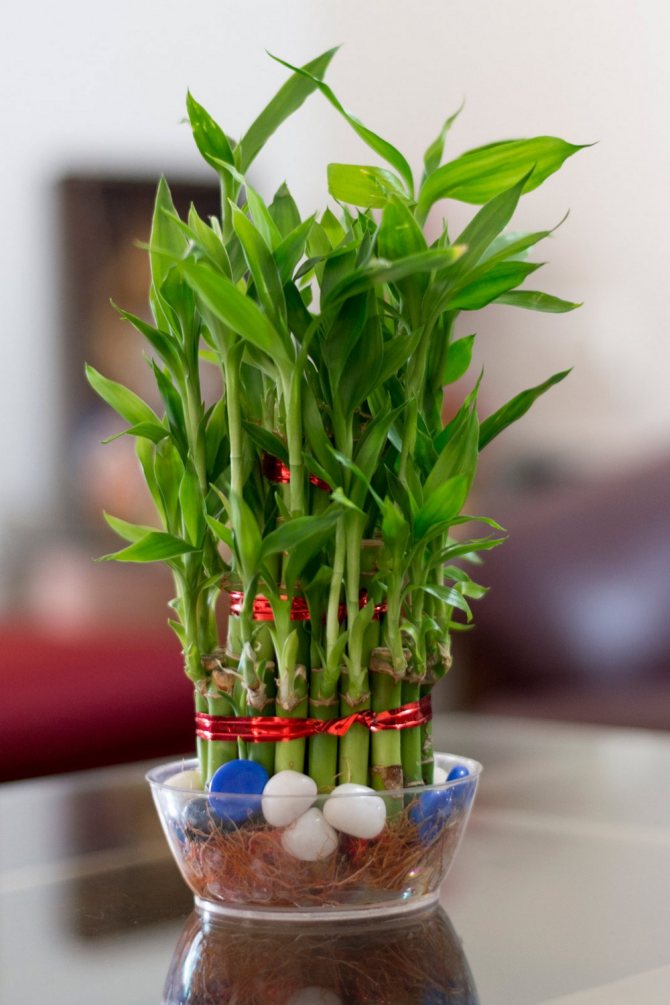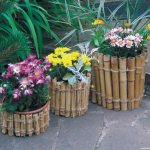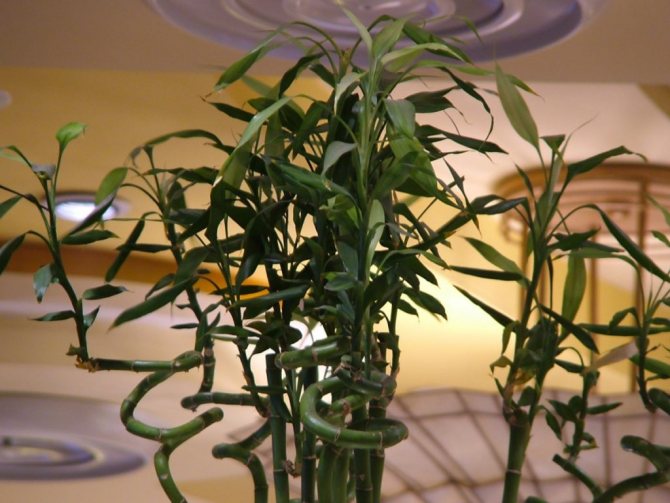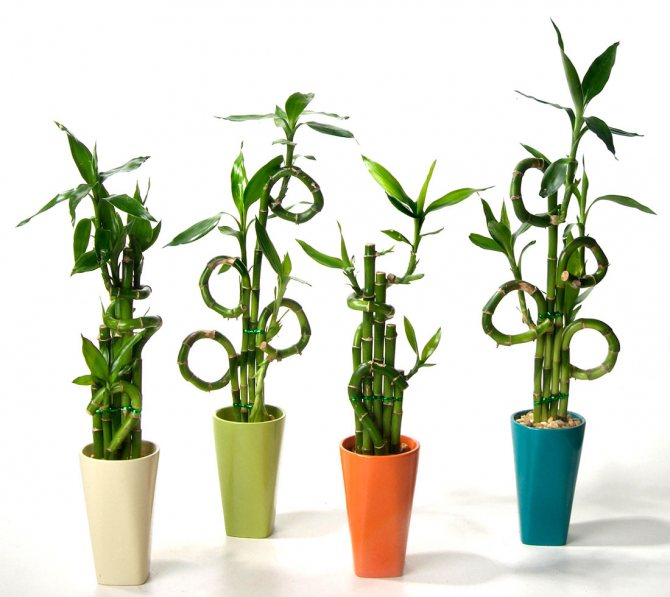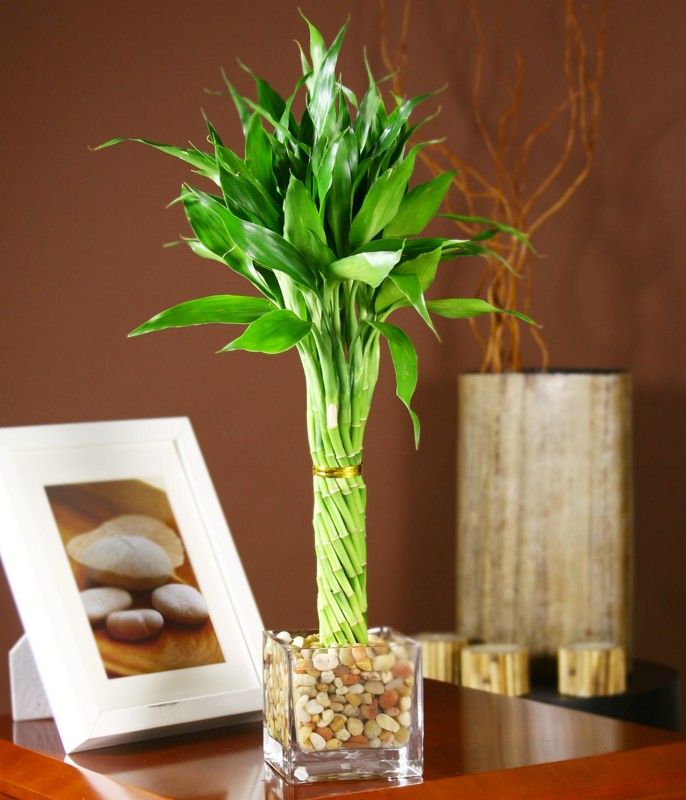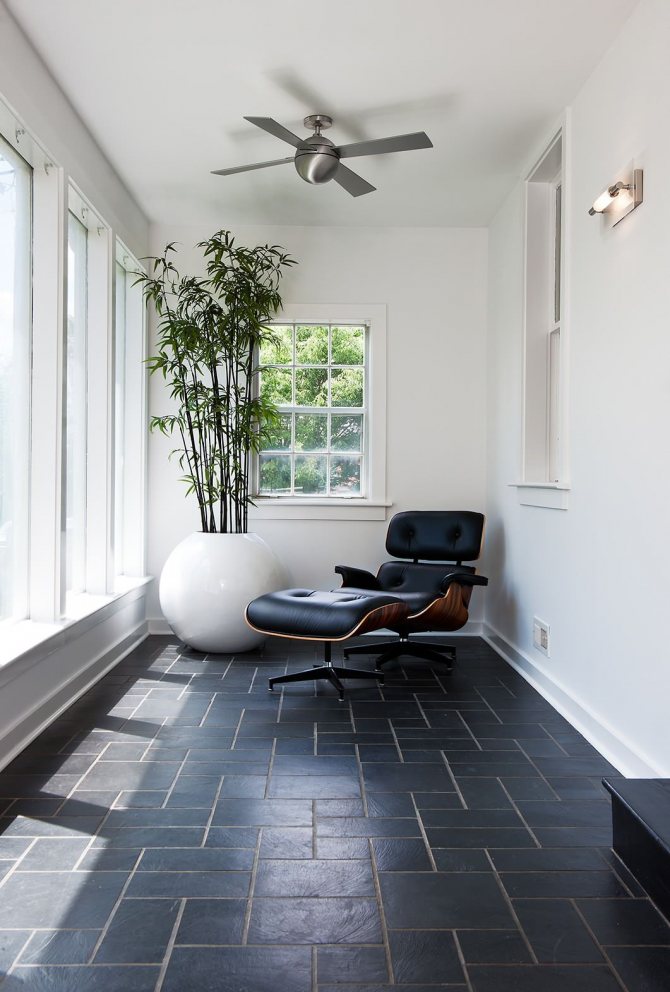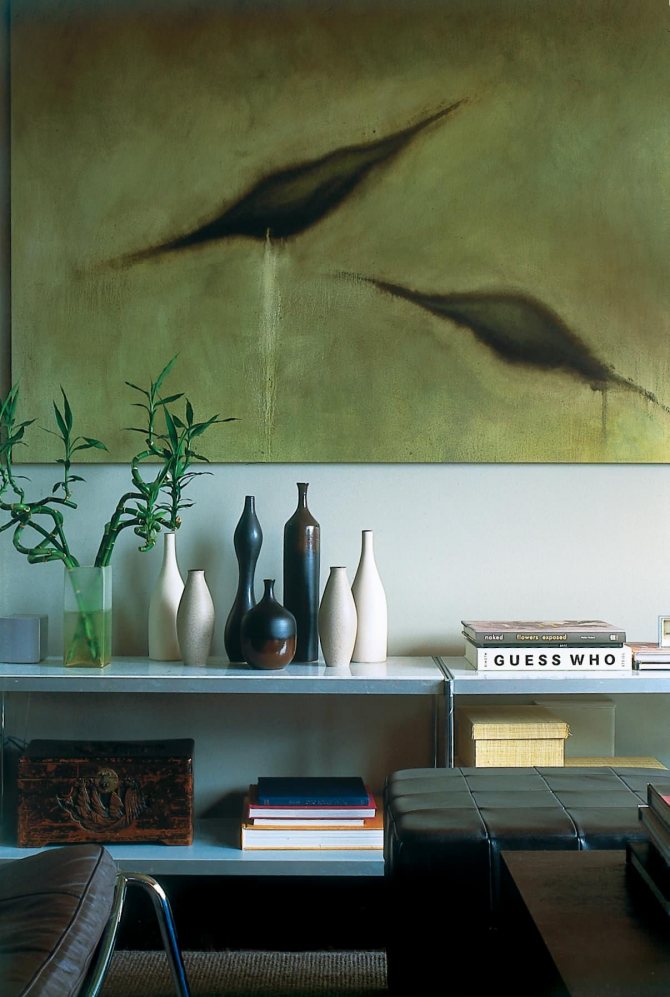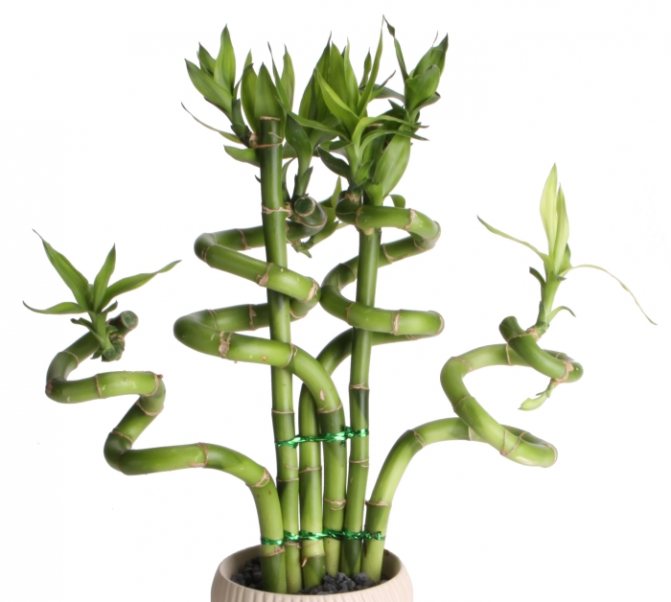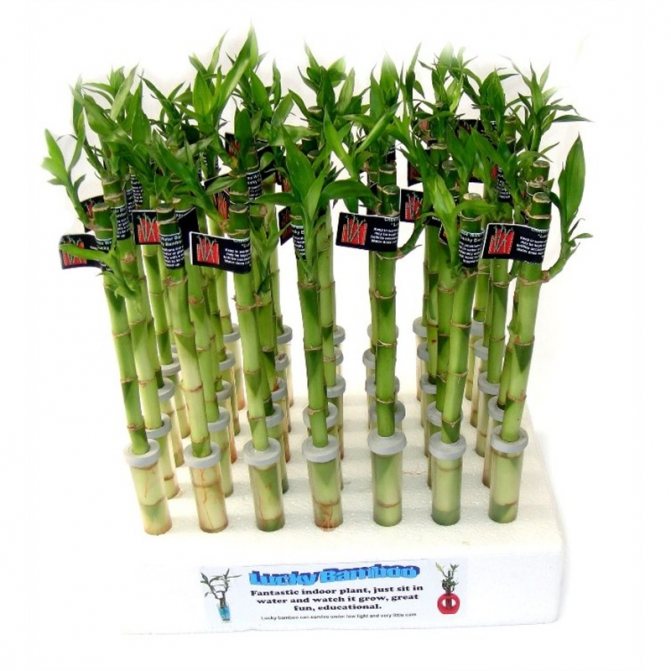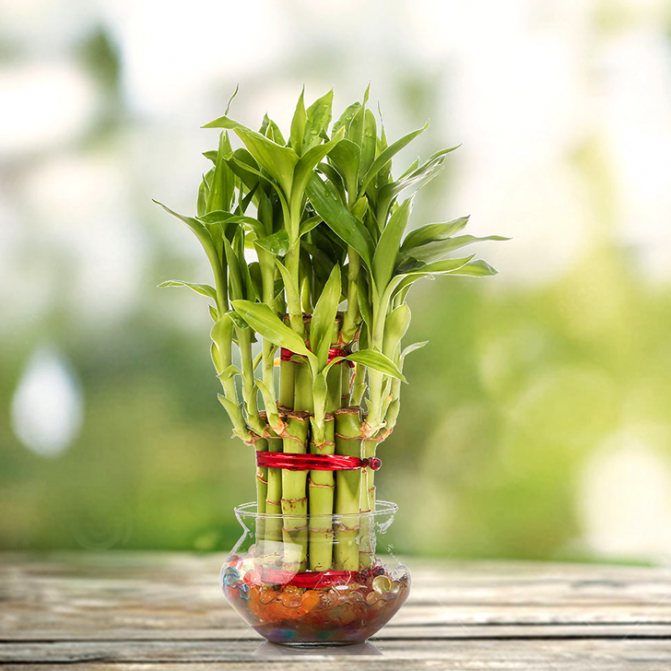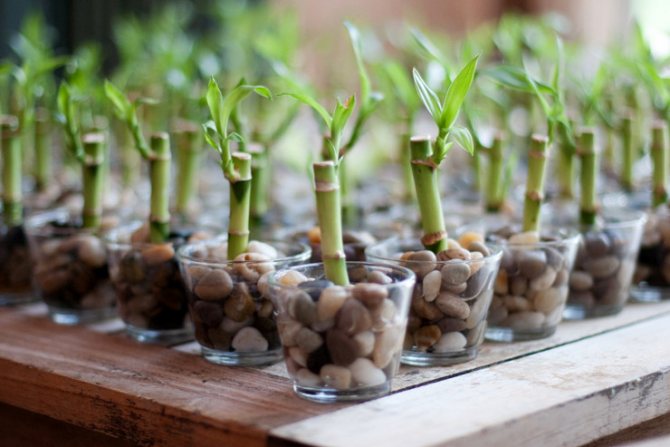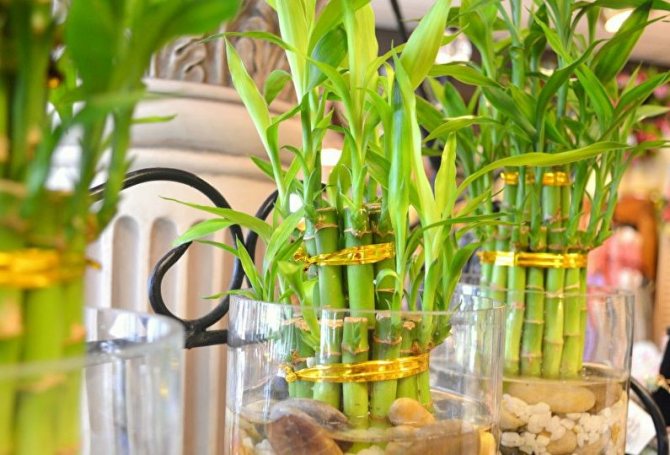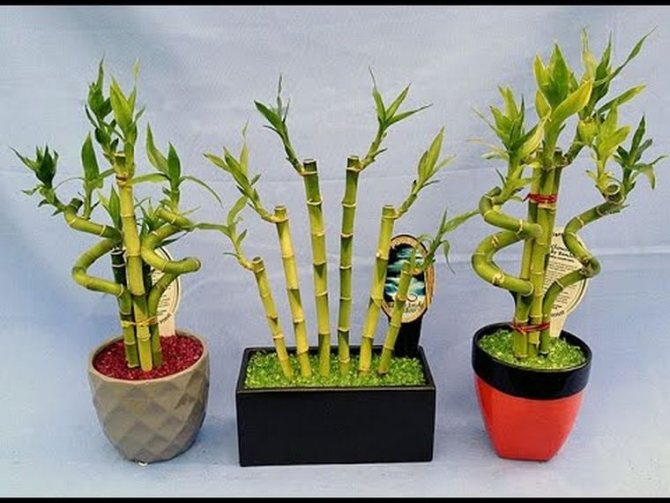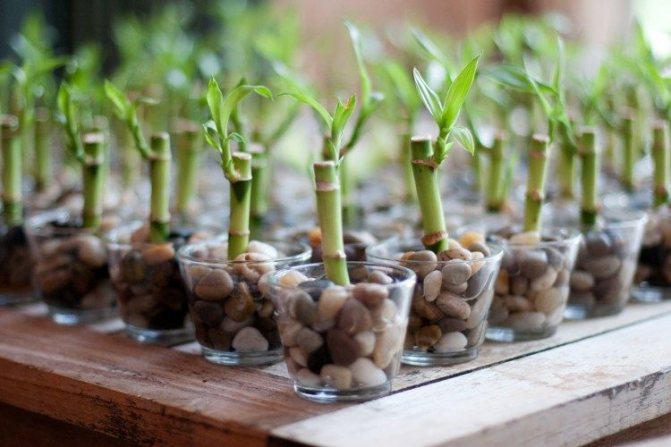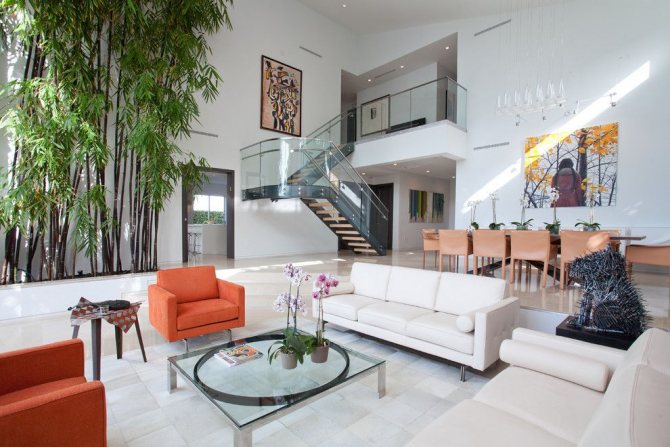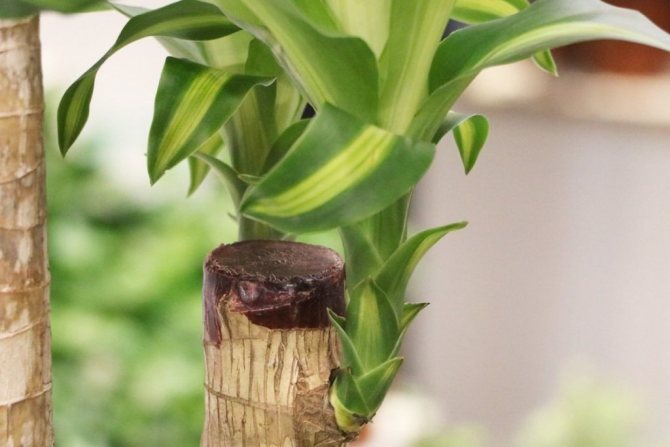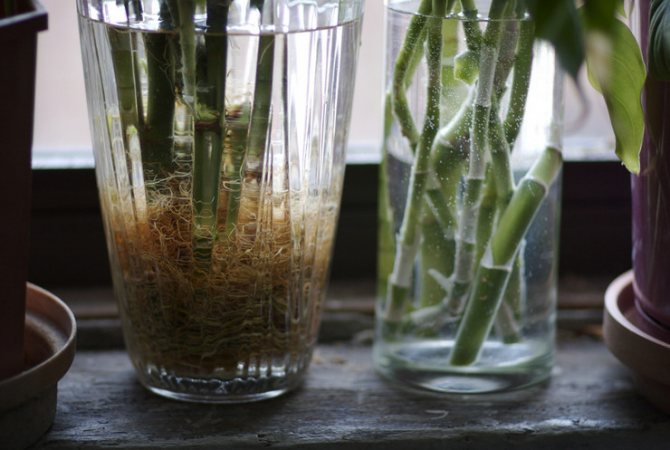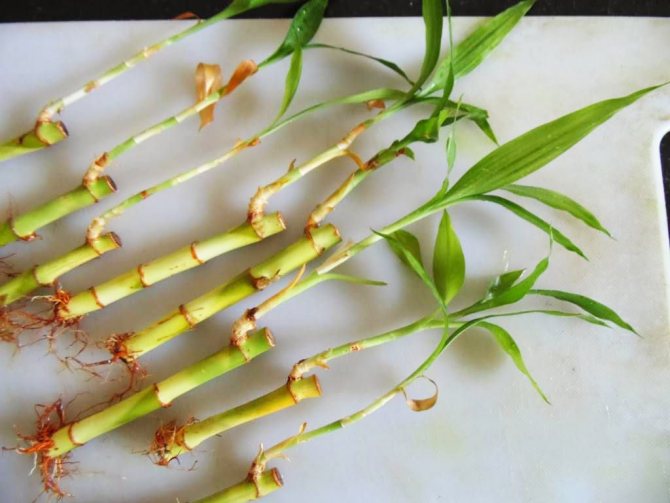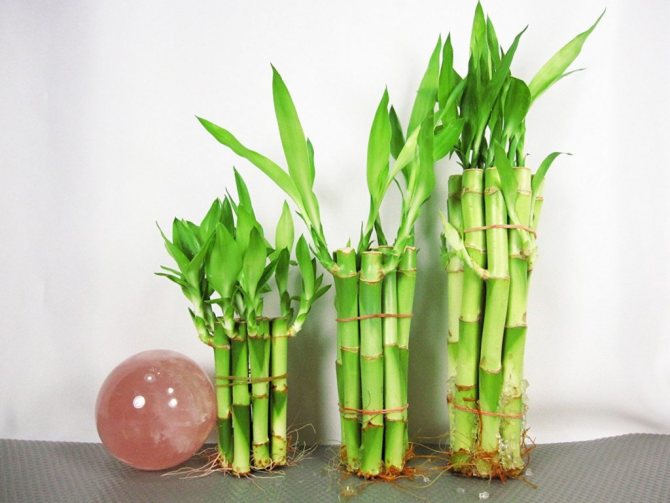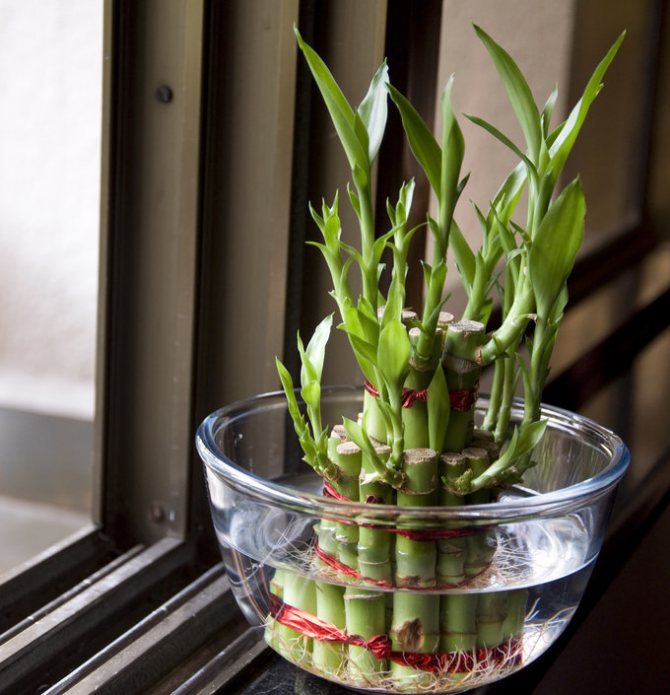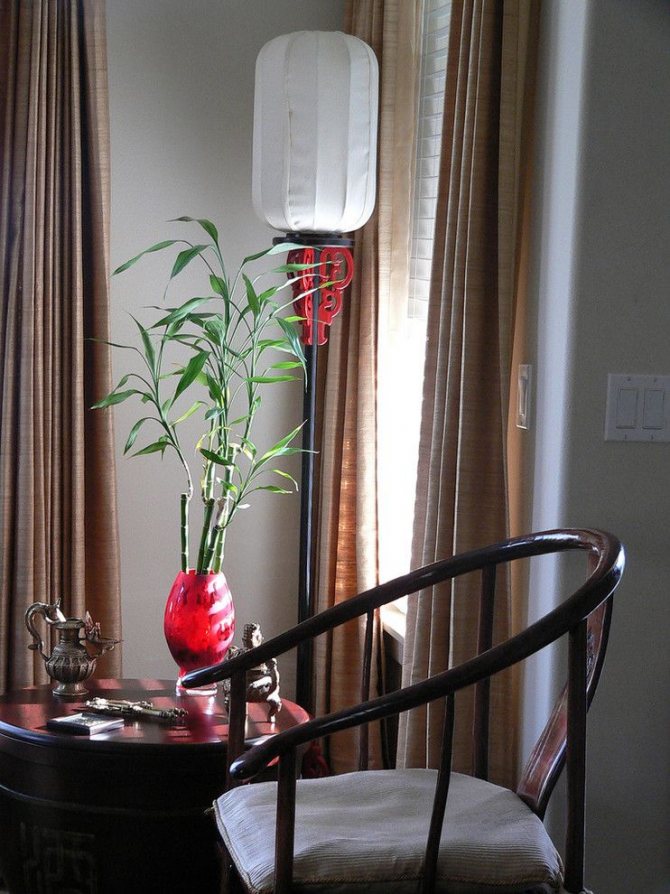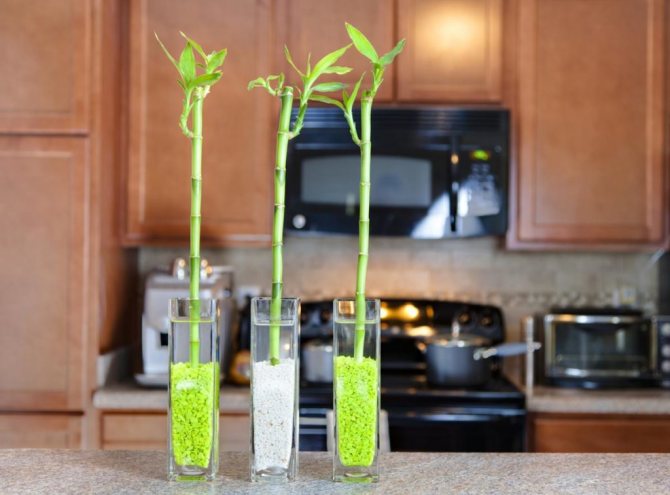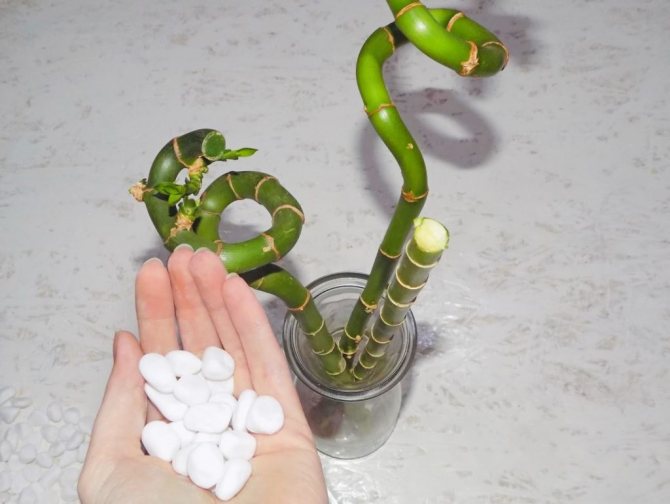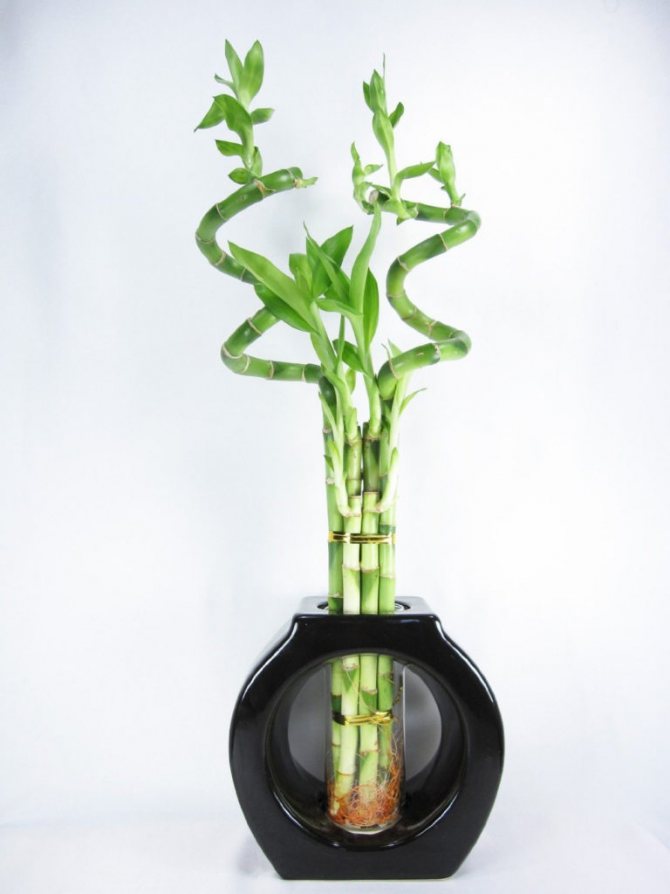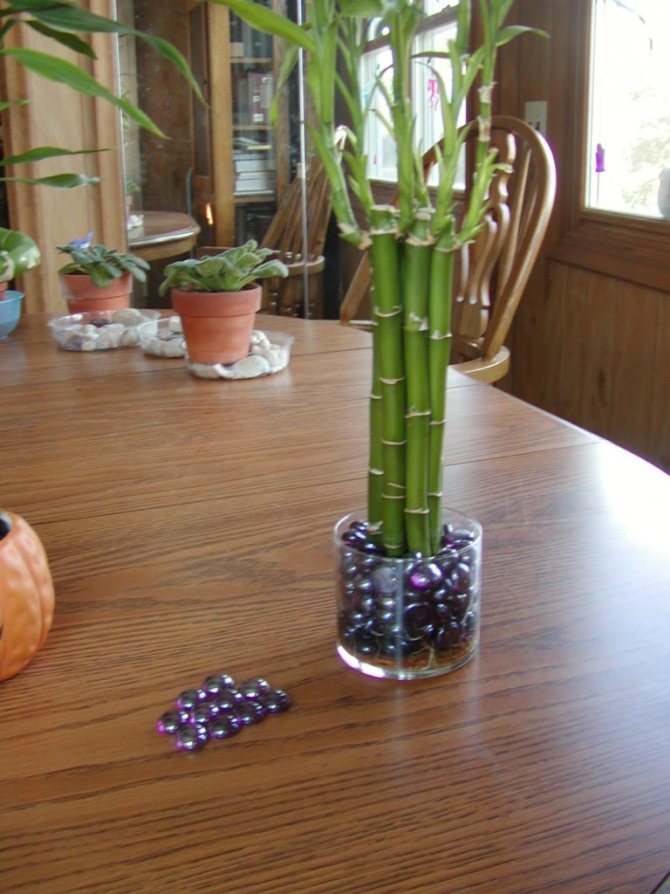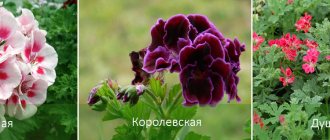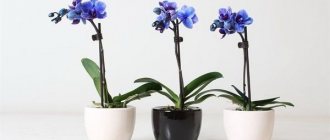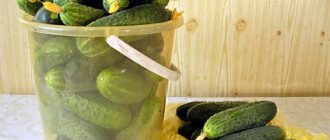Indoor bamboo is a collective name for several plants at once from genera similar in appearance. More often, it means Dracaena Sander (tree of happiness, varnishes) from the Dracene family. It has nothing to do with the tree bamboo that grows in the wild and is a herb. But because of the similarity with wild bamboo species, it is called indoor (ornamental) bamboo. It is an evergreen perennial with a fleshy stem, on top of which are lanceolate leaves.
Dwarf bamboo species are grown at home, which grow no more than 1 m in height. These are unpretentious exotic plants that fit into any interior. Moreover, they can be grown both in soil and in water. If you follow all the recommendations for care, bamboo can grow and decorate the room for many years.
Application of bamboo
Bamboo shoots are used in the construction of houses, for the manufacture of musical instruments, in medicine, as well as for decorating living quarters.
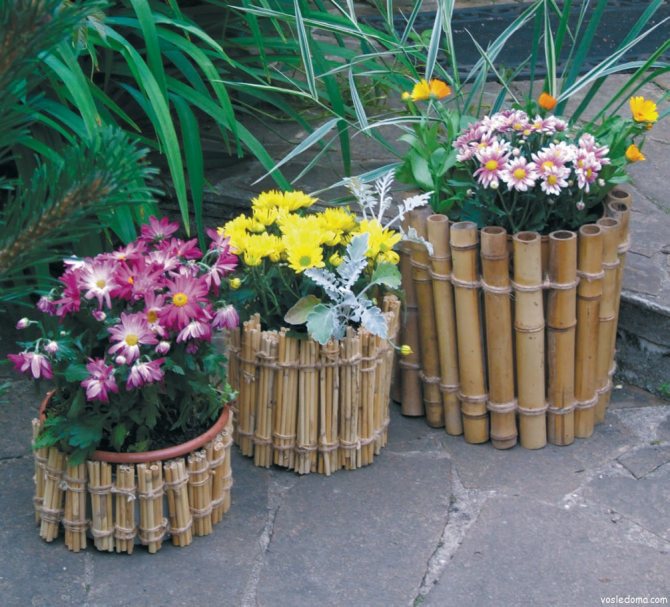
It is one of the most beneficial plants on earth - it prevents soil erosion by holding it together with its roots.
The plant has a very powerful energy, which is proven by research in the field of quantum physics. It has been noticed that people who come into contact with bamboo in natural conditions feel an influx of inner strength, and animals near the bamboo grove reproduce more intensively, especially during the flowering season.
To experience the magical properties of a bamboo houseplant, it is enough to have this plant and take care of it.
To choose which type of indoor bamboo is more suitable for a particular person in terms of energy, you need to go to the store and touch the plants. One of them will definitely want to serve the master. And you need to buy it.
How to prune indoor bamboo?
The plant is very malleable. You can make a tree of any shape from it. If you want a branched plant, pinch off the tops. This will ensure the appearance of side shoots. Spiral plants can often be seen in stores. They don't grow like that in nature. You can achieve this shape using a straw, which is sold in a flower shop. In nature, the stems have a perfectly even shape, this can be seen in the photo. The types of pruning and the shape of the plant depend on your imagination. How to crop Dracaena, you can watch the video. This culture is adored by creative people.
Care requirements
If there is no time to deal with whimsical indoor plants, there is nothing left to do but plant and grow bamboo at home in a pot. This plant does not require constant attention. It is enough to find a place for him with good lighting, occasionally water and monitor breeding.
Lighting
All tropical cultures prefer the sunny side, so they place them on the east or southeast windowsill. In summer, you need to shade from direct sunlight so as not to provoke burns. Because of them, home bamboo loses its decorative qualities.
If the plant is located away from the window, it needs fluorescent lamps to provide light 12 hours a day. With a lack of lighting, the leaves will develop chlorosis and turn yellow.
Temperature
The temperature is considered comfortable for the plant. from 18 to 25 degrees, but it calmly tolerates higher modes - up to 30 degrees without visible consequences. To enhance evaporation, it is sprayed and the room is ventilated.
Humidity in the room
In the tropics, humidity is high, but indoor species gradually get used to other habitats. It is not advisable to place the pot close to radiators. If the air in the apartment is too dry, you can use a household humidifier - this is useful not only for plants, but also for people.
Video: Bamboo in indoor conditions
Reproduction of bamboo at home
Dracaena is one of the fastest growing plants. It can multiply with seeds, rhizomes, or trimmed parts. How to grow bamboo from a scion? Need to:
- Water the plant the day before pruning.
- Choose a suitable escape. It should be long and green.
- Remove foliage from the scion, leaving a few mature leaves at the top. This promotes the formation of new roots.
- Remove escape. A very sharp knife or scissors should be used to make a 1 cm cut from where the scion meets the stem. The smoother the cut, the less likely a bacterial infection will occur.
- To preserve the stem, it will also have to be cut 1 cm below the area where it connected to the shoot.
- Treat the trimmed area with candle wax to prevent bacteria from growing.
- Place the cutting in water (it stimulates root growth better than the soil).
- Place the vase away from light, as direct sunlight can damage the plant. After 1-2 months, the dracaena should give several roots. After that, it can be planted in a pot of soil.
Growing in soil
How to care for bamboo at home in the ground:
- The pot should be wide, but not deep, as the root system grows more horizontally in the soil.
- The soil is suitable for those sold in supermarkets for dracaena. You can mix in equal proportions mullein humus, peat, turf soil with an admixture of clay. Lay drainage at the bottom. Tropical plants prefer constantly moist soil without stagnant water. The same goes for bamboo.
- Top dressing during the growing season is carried out once a month. This plant grows rapidly in size, therefore it consumes a large amount of micro and macro elements.
- Use separated water, without chlorine, since chlorine compounds can cause chlorosis of the leaves and the death of the plant. Rain or melt water will do.
Bamboo does not have a dormant period, since it is generally believed that dormancy is the period after flowering. The plant blooms only once in a lifetime, but caring for bamboo at home does not allow you to see this process.
Transplant the plant once every 3 years. The first time after transplanting it is not fed, since all the nutrients are present in the soil. As you grow, you can add complex dressings.
You can decorate any room with bamboo in a pot.
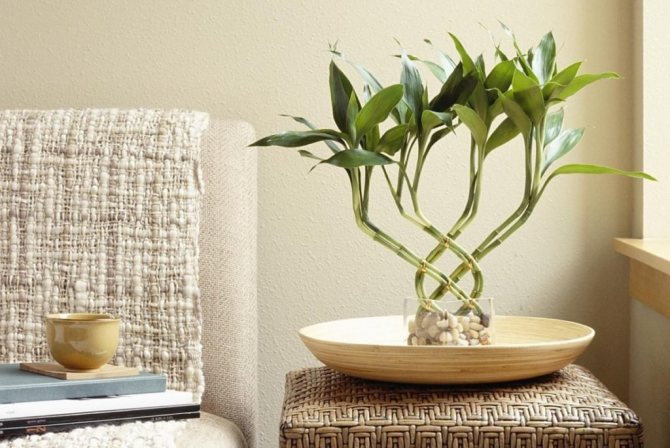

For this, the plant is formed by cutting. It tolerates this procedure well. Depending on the design purpose, the top can be cut off and rooted separately, side shoots to enhance bushiness. We must not forget to process the sections with activated charcoal so that an infection does not get into the wound.
Common problems
Sometimes the appearance of a plant signals certain problems that it is desirable to eliminate immediately.
The main problems and methods of elimination:
- Brown tips of the leaves. The main reason is a burn with fluoride, which is contained in the water. It is necessary to replace the water with distilled, boiled or rainwater.
- Yellowing of the leaves. It happens in too bright light, so the plant is rearranged in a shaded place. The leaves turn yellow even with an excess of fertilizers.In this case, you need to replace the water and stop feeding the plant for at least 3 months.
- Yellowing of the stems. The problem arises when there is an excess of fertilizers, but this is already a neglected case. It is better to cut the stalk off the top and propagate a new plant. When one stem turns yellow, it is removed and the water is changed.
- Soft and dark stems. A sign of root rot that can appear when bamboo is cultivated in both water and soil. In this case, it is also better to cut off the stalk and breed a new plant.
Florist experts call Dracaena Sander a very living plant, that is, it is difficult to ruin it. Problems during the cultivation of bamboo at home appear only with a strong violation of the rules of agricultural technology.
With proper care, Dracaena Sander will decorate the interior for up to 15 years. The plant can be regularly propagated and original compositions can be made. Lucky bamboo, planted with your own hands, is a great gift with meaning to present to friends and family.
Bamboo spirals are often found in bouquets. But, unlike other cut flowers, this unique does not wither at all, but continues to grow and gives roots in the water, thereby, as if hinting about its desire to stay in your house. And, if you haven't grown indoor bamboo at home yet, it's time to give it a try!
Family: asparagus. Bloom: not. Cultivation: medium-hard.
Growing in water
In order to create decorative compositions "happy bamboo", in other words, Sander's dracaena is grown in water. For this, glass vases are chosen, decorative material, for example, expanded clay, is placed on the bottom, a bunch of dracaena is installed and looked after.
There are a number of requirements so that the "lucky bamboo" preserves the greenery and does not die:
- Water should be used only purified, filtered. Distilled liquid will work as it will not contain harmful compounds.
- We need constant feeding to maintain the metabolism in the tissues.
- You need to change the water in the container 2 times a month, so that the roots do not rot. If an unpleasant odor appears or the leaves begin to change color, the liquid is changed without waiting for the due date.
They take care of the "water" plant in the same way: it is formed, propagated by tops or layering, cut off at your discretion. If necessary, the roots can be transferred to the soil.
When using a hydrogel, it is better to choose small granules - they cover the roots better, preventing them from being exposed.
Advice! Water should be poured only to the level where the root system is located. If you fill it higher, then roots will begin to form in that place on the trunk, which will worsen the decorative characteristics of bamboo in water
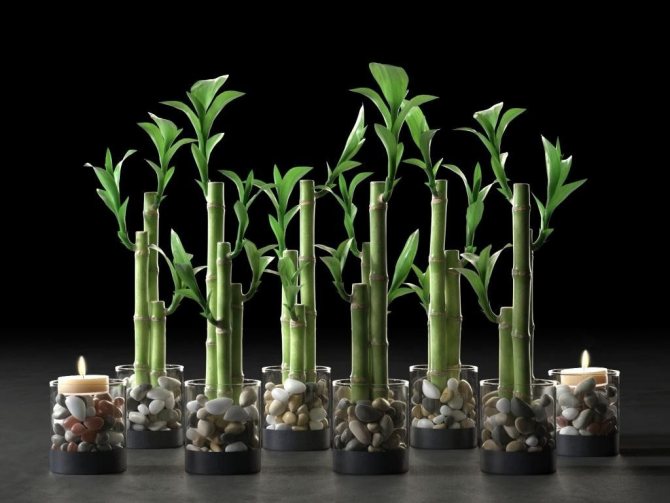

How and when to transplant happiness bamboo?
You need to replant the plant annually. For this, a mixture of universal soil with sand is taken. If Sander's dracaena grows in water, then it must be pulled out of the liquid and the roots that have begun to rot should be removed. Then the water changes and is saturated with fertilizers.
Happiness bamboo breeding methods:
- by dividing the stem;
- cuttings.
The most interesting thing is that few people know how the dracaena Sander reproduces in nature. But in our country, the most common way to acquire Dracaena is the stem division method. It is simply cut into several short stumps. The upper edge is greased with warm wax, and the lower part is placed in water. Dripping wax is necessary so that the plant does not lose moisture. After the appearance of the first roots, do not rush to plant the dracaena Sander in the ground. Wait until lateral buds appear. The plant feels great in water.
Dracaena Sander reproduces well by cuttings. To do this, you need to cut off the top of the shoot and place it in the water. As soon as the roots appear, you can plant the plant.A peculiar way of growing Sander's dracaena is by rooting on both sides. To do this, a piece of the stem is waxed on both sides up to half. This piece is placed in a plate and poured over with water. Soon, after the appearance of roots and cuttings, the plant is planted in the ground.
Reproduction
Growing bamboo of the present, which belongs to the family of cereals, is almost always done by the root method. The branched underground part sprouts to the surface, so that the plant quickly covers large areas. To stop reproduction, you need to control the process of root growth. Sometimes underground fences are made for this, through which the roots cannot break through.
It is possible to get a new plant from seeds only in the tropics, where there is a chance to see blooming bamboo and collect seeds. Even in nature, plants bloom once every 60 - 120 years. Scientists cannot understand why all plants that originate from one root bloom at once.
At home, you can try to propagate Dracaena Sanderina or Fragrans. These are the most common plants that have several options for breeding:
- Apical cuttings.
- Offspring.
The most convenient and fastest ways to get a new plant. The breeding procedure is carried out in the spring, when the dracaena wake up and begin to grow actively.
By cuttings
You can cut a stalk from a young or adult plant from the top. After that, the growth in height will stop, and the dracaena forms lateral shoots from dormant buds. The resulting cutting is placed in water to build up roots.
You can add some kind of growth stimulant to make the process go faster. After the roots appear, the cutting is transferred to the ground or immersed in a hydrogel for further growth.
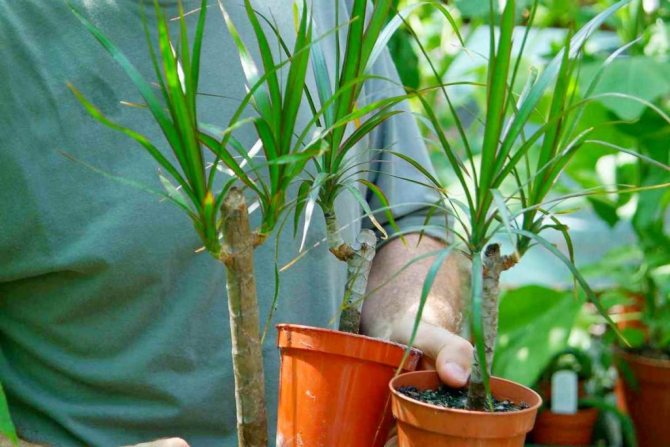

Important! Slices must be treated with a disinfectant so that the plant does not get sick. Pruning tools should be wiped with alcohol before use
Root offspring
A long, but very real way of breeding indoor happy bamboo. With the lignification of the trunk of the dracaena, "children" may appear in the area of the roots. To transplant, they are separated carefully, trying to less damage the mother plant. The sections are covered with crushed activated carbon, and the offspring with the outlined root system is transferred to a new pot.
Barrel division
There is a sign according to which you need to plant immediately 21 bamboo stems, so that they bring good luck. If you plant bamboo in turn, then care and reproduction will be a very long process. There is only one way to get 21 plants in a short period of time: cut the old dracaena trunk into several pieces and put them in nutritious moist soil.
At the same time, all dormant growth points are activated - they will begin to release roots, and then leaves will appear. Further, individual plants need to be separated from each other and planted as planned for a design solution.
The plus is that they will grow at the same time, and an old plant with a bare, ugly trunk will give life to several new specimens.


From seed
The seed method will take a very long time to grow a bamboo grove at home. Growing bamboo from Sander dracaena begins by germinating seeds in a special greenhouse or in a homemade container:
- Moisten the soil or peat tablet.
- Place seeds in each cell.
- Cover with glass or foil.
After a month, you can see the first shoots if the seeds are suitable for reproduction. Then they are transplanted into separate pots and grown.
Optimal growing conditions
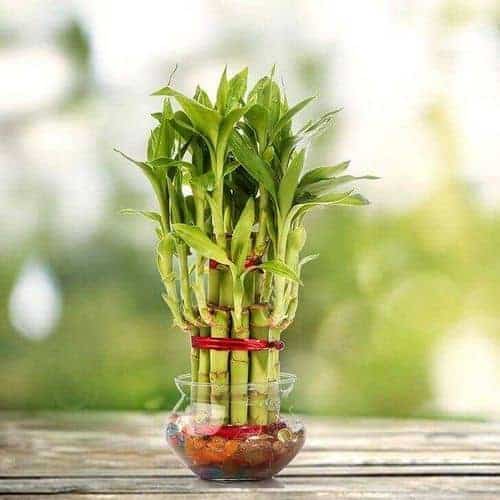

In the homeland of Dracaena Sander, the sun shines brightly, but the culture does not tolerate direct sunlight. In this case, burns and yellowing of the leaves often appear. The fact is that in nature, dracaena is always shaded by other plants.Therefore, at home, a decorative bush is placed in a bright, but diffused light, preferably near windows with a west or east direction. When placing home bamboo on the windowsills of the southwest windows, you should take care of shading curtains.
The optimum temperature is + 15- + 22 ° С. A decrease in air temperature to +1 ° C leads to the death of the plant, therefore, when buying bamboo in winter, you need to take care of a good shelter during transportation home. Dracaena should not be placed near opening doors, vents and ventilation openings. Changes in temperature during drafts can lead to stress and stunted plant development.
Dracaena Sandera calmly tolerates dry air, so you do not need to spray it. But it is imperative to remove dust from the surface of the leaves with a damp cloth.
Reference! To create spiral stems, a special tube is put on the young sprout. The stalk grows inside it and twists. After the shoot grows up, the tube is removed, the plastic stem of the dracaena retains the appearance of a spiral.
Bloom
The flowering of real bamboo is considered a bad omen in all countries.
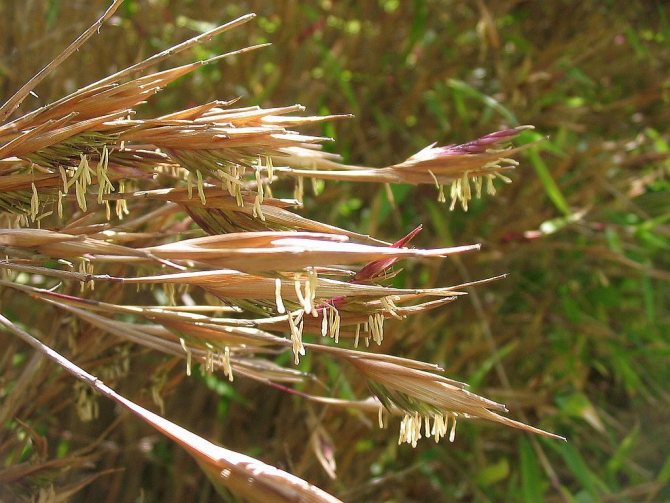

The fact is that the aroma of bamboo fruits attracts rodents from all around. They gorge themselves, then switch to sown fields, also destroying everything edible around. The last time this phenomenon was observed in 2008, and its frequency - from 60 to 130 years old.
In nature, after flowering, whole bamboo plantations die, since plants on all continents, obtained from one common mother root, bloom at the same time. Then they also die at the same time. This leads to hunger in the animal kingdom, as most pandas only feed on juicy bamboo stalks.


In the case of the lucky bamboo, these troubles do not occur. Dracaena Sander blooms more often. It can be provoked to the formation of buds by properly organizing care at home.
Biological features
Dracaena Sandera is an amazing plant that forms green and erect stems with seals like real bamboo. According to the ancient Chinese philosophy of feng shui, dracaena has a positive effect on the favorable flow of qi energy - it brings happiness, success and good luck into the house.
These features of Sander's dracaena were once taken advantage of by marketers who called it "The Bamboo of Happiness." Under this name, in the form of long shoots with few leaves, planted in flasks with water, the plant is most often sold.
The popularity of Dracaena Sander among flower growers is also facilitated by its absolute ease of care. Homemade bamboo takes root in almost any room and does not require special attention. With the help of dracaena, florists create original compositions for decorating the interiors of homes, offices and public spaces in Asian style.
The homeland of Dracaena Sander is the Central African country of Cameroon. It is an evergreen perennial shrub with green and erect stems, which in natural conditions can reach up to 3 m in height. At home, dracaena grows up to 1-1.5 m in height, flexible, juicy green leaves reach up to 21 cm in length. At home, the culture does not bloom.
Another amazing feature of Sander's dracaena is the ability to grow both in soil and in water. But the dracaena acquires a bamboo look with an erect and knobby stem only in hydroponics. When cultivated in soil, it forms numerous leaves and looks more like a palm tree, like other types of dracaena.
Winter care
In the winter season, real bamboo is rarely watered, preventing the soil from completely drying out. If the temperature below 16 degrees, the amount of water is reduced to a minimum so that the roots of the tropical plant do not freeze.
Lighting in winter differs in that the plant does not need shading.Winter rays are not dangerous for the leaves, and the short daylight hours are barely enough for the leaves to continue to synthesize chlorophyll and not turn yellow.
Dracaena Sander or Fragrance in the form of bamboo trunks in winter are placed away from radiators, but the lighting must be full. Watering at low temperatures is minimal. If the plant hibernates in the room, it is sprayed so that the leaves do not dry out.
Choosing a place for indoor bamboo
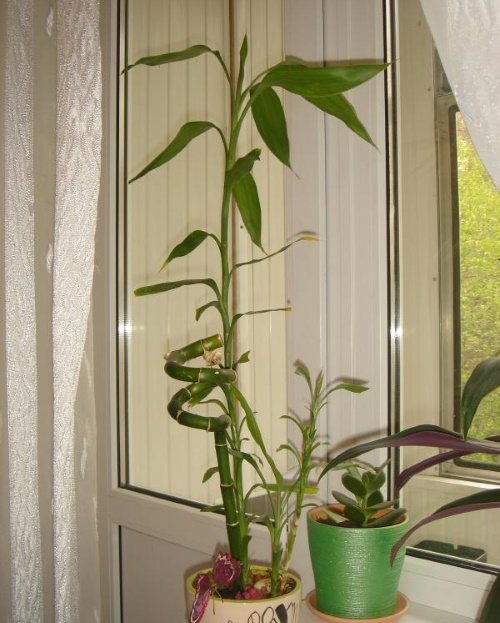

West or east windows are ideal for bamboo. He prefers bright but diffused lighting. If you put it in the northern part of the house, then the bush will begin to lose foliage, and its growth will slow down.
In winter, the plant continues to develop and still needs sunshine. From late autumn to mid-spring, you will need to additionally illuminate the bush. Otherwise, the shoots will stretch out and become thin, and the lower leaves will fall off.
Loves bamboo and warmth, all year round. It tolerates summer heat without problems if there is enough moisture. But it is impossible to allow the temperature to drop below 13 ° С heat.
It's also a good idea to put a bowl of water next to the bamboo - it will increase the humidity in the air. But it is better to refuse spraying the foliage - the stems can rot. It is best to regularly wipe down the green plates with a damp sponge.
What does bamboo mean according to the teachings of feng shui
There is a system for combining the number of stems in bamboo. If you believe, feng shui, by creating a certain composition of several processes, you can attract all the benefits to the house.
- 3 stems - joy and peace;
- 5 stems - financial well-being and business success;
- 7 stems - health and longevity;
- 20 stems - love and family happiness;
- 21 stems - well-being in all areas of life.
In order not to cause trouble, compositions with 4 stems should be avoided. She is considered unfavorable in Feng Shui.
To enhance the magical properties of the plant, bamboo stems are tied with beautiful golden or red ribbons, and multi-colored glass and pebbles are laid on the ground.
It is also customary to "plant" figures of animals to the bamboo of happiness: a dog, an elephant, a panda or a frog. It is believed that they have a beneficial effect on the energy of the plant.
